The Canon Rebel T7 was released in 2018 and is still one of the most popular DSLR camera thanks to its price and ease of use.
It allows you to switch between different lenses, with more than 200 to choose from (Canon and many other third-party brands). This is one of the best things about DSLRs; being able to shoot all types of different scenarios with high image quality.
The Canon Rebel T7 uses an EF-S mount but can accept both EF and EF-S lenses. Basically, it works with all Canon lenses even though it was designed with EF-S in mind (they are slightly smaller and cheaper).
Best Lenses for Canon Rebel T7:
- Canon EF 50mm f/1.8 STM
- Canon EF-S 18-135mm f/3.5-5.6 IS STM
- Canon EF-S 10-18mm f/3.5-5.6
- Canon EF 85mm f/1.8 USM
- Canon EF-S 55-250mm f/4-5.6 IS STM
- Canon EF-S 24mm f/2.8 STM
That’s it! I know I said there are over 200 lenses to choose from, but these are the most versatile and give you the most bang for your back.
Oh, they are also far from expensive, with prices ranging between $100 and $300.
Now it’s up to you to decide whether you want a zoom lens or a prime lens.
- Zoom Lens – Versatile and useful for more scenarios since you can zoom in and out
- Prime Lens – No zoom, smaller and cheaper as well as better in low light
My recommendation? Get both. One good zoom and an even better prime lens.
If you decide to buy anything after clicking the links that go to Amazon, my website may receive a small commission.
1. Canon EF 50mm f/1.8 STM
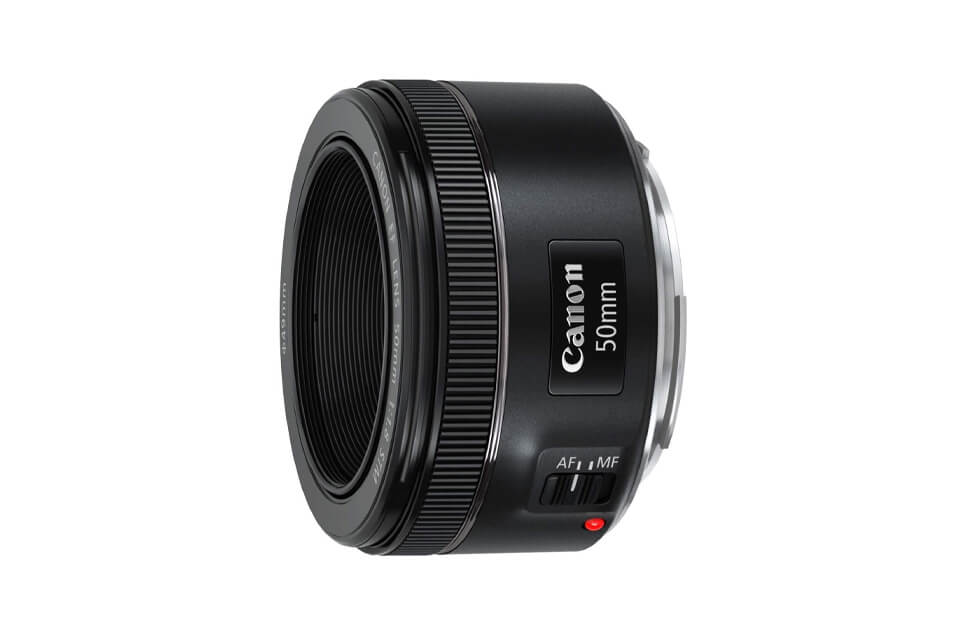
Best for: Portraits, weddings, low light, travel, details, pets
Filter Diameter: 49mm
Weight: 160g (5.6 oz.)
The Canon EF 50mm f/1.8 STM is the most popular Canon lens ever made and it’s easy to see why.
It’s cheap and delivers amazing image quality.
As a matter of fact, every camera brand has an affordable, high quality 50mm lens. It’s pretty much a requirement because 50mm is excellent for portraits, food, events and daily photography.
It is a prime lens, meaning there is no zoom, but that’s one of the reasons why it’s so compact and affordable. Trust me, for around $100 you won’t find anything better or even close when it comes to optical quality.
Why is this lens so popular?
Because of the big f/1.8 aperture that allows you to really blur the background. It’s what smartphone cameras try to emulate and often fail, but DSLR lenses can achieve this without any issues.
Simply set the aperture size to f/1.8 and your portrait shots will have your subject stand out, with the background completely out of focus (also known as bokeh). This is also ideal for pets, details, weddings and many similar situations.

50mm and f/1.8
It has no zoom, will that be a problem?
It’s definitely awesome to have zoom lens, but there are a ton of professional photographers who only work with prime lenses. It actually forces you to be more creative with your position and field of view, because you have to physically get closer to your subject.
You probably already own the Canon 18-55mm kit lens you got with the Canon Rebel T7. Set it to 55mm and pretend you have a prime lens that can’t zoom at all. How does it feel after shooting for a while?
Compared to the kit lens, the Canon 50mm f/1.8 is actually usable in low light thanks to its huge aperture. The kit lens is horrible for situations with little to no light, and raising the ISO will result in noisy images.
Colors, image quality, sharpness, all of these are top notch and a huge improvement over the kit lens. It’s something you can keep forever and I haven’t met a single photographer that would regret it.
You can buy the Canon EF 50mm f/1.8 STM Amazon here.
2. Canon EF-S 18-135mm f/3.5-5.6 IS STM
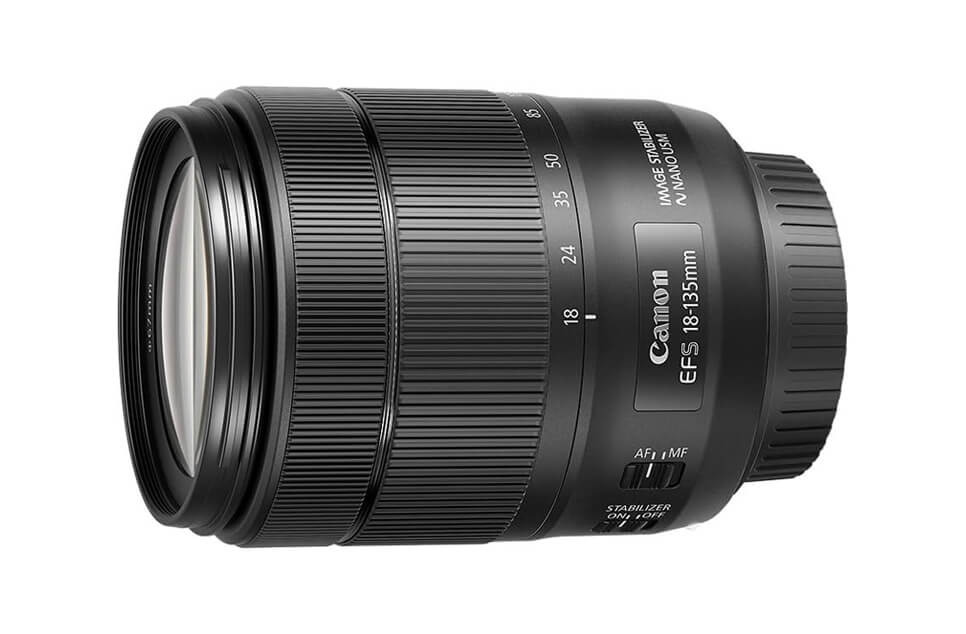
Best for: Portraits, weddings, low light, travel, details, pets
Filter Diameter: 67mm
Weight: 480g (16.93 oz.)
The Canon EF-S 18-135mm f/3.5-5.6 IS STM is like the complete opposite of the 50mm above.
First, it’s a zoom lens that goes all the way from 18mm to 135mm, as well as every number in between. Simply twist the zoom ring and you can go from 18 to 135mm in less than a second!
With so much zoom, this can be your all-in-one lens for traveling and day to day photography. From hiking in the mountains, to street photography and portraits in the distance.
What about its features?
The Canon 18-135mm has Image Stabilization (IS) that will help you get less blurry shots when photographing in low light.
Why are night shots often blurry? It’s because your shutter speed has to be really low to get in as much light as possible. As a side effect, even the tiniest unwanted movement will result in a shaky image, and that’s where the Image Stabilization motor helps a lot.
Then there’s STM, a focusing motor that makes auto focusing quick, quiet and reliable. It also makes it convenient for recording videos because you don’t want the motor to be audible in your clips.
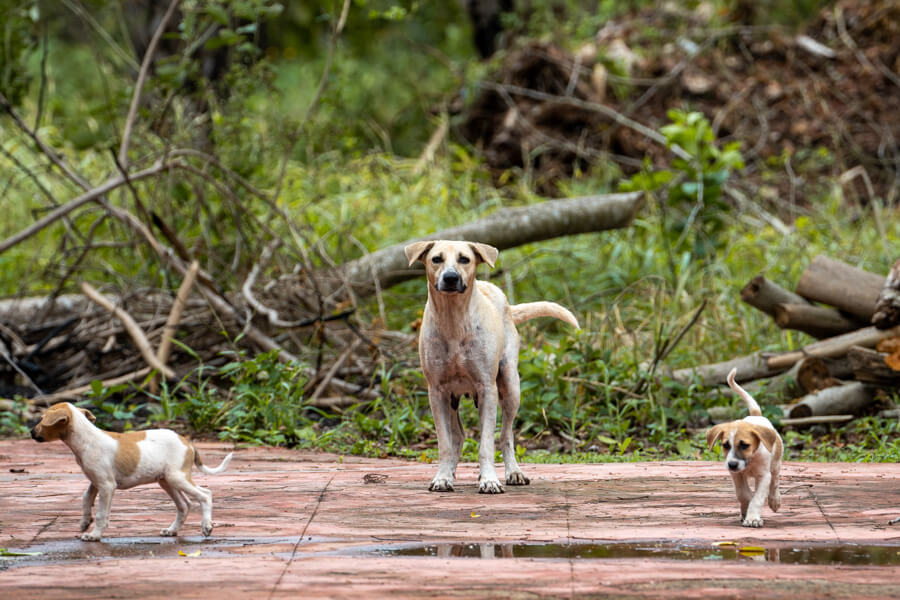
135mm at f/5.6
The Canon 18-135mm is my favorite general-purpose lens
The kit 18-55mm lens is okay, but the difference between 55mm and 135mm is enormous. It allows you to shoot casual outdoor sports and even animals that aren’t that far away (but definitely not smaller birds).
If you’re looking for that one general-purpose lens, I really can’t recommend anything else at a similar price.
A lot of people actually have a combo like this; the 18-135mm for everything, and a 50mm f/1.8 for more specific events. You’ve got almost all focal lengths covered, except the ultra-wide (which is my next recommended lens).
It’s the heaviest lens on this list though, weighing nearly half a pound. Not heavy, but also not the lightest setup, and it’s definitely something you should think about before purchasing it.
You can buy the Canon EF-S 18-135mm f/3.5-5.6 IS STM Amazon here.
3. Canon EF-S 10-18mm f/4.5-5.6 IS STM
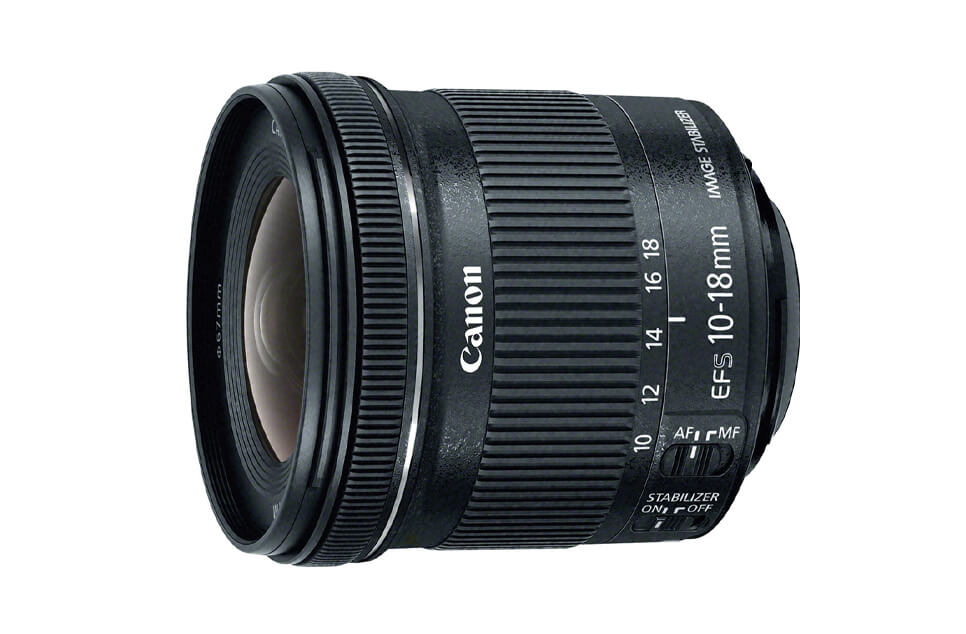
Best for: Landscape, ultra-wide, real estate, architecture, traveling
Filter Diameter: 67mm
Weight: 240g (8.47 oz.)
If you want to go super wide, check out the Canon EF-S 10-18mm f/4.5-5.6 IS STM.
Not everyone needs an ultra-wide lens, but if you want to capture landscape and scenery, you’ll love the extra field of view it offers.
For indoors and architecture photography, this lens is a must. The kit 18-55mm starts at 18mm which is usually barely enough to photograph a room, a full building or capturing an interior in one frame.
Flare and distortion are very well controlled which is surprising for a lens at this price; distortion is not an issue. Ultra-wide glass often suffers from similar problems because it’s very hard to achieve high quality results at extreme angles.
What is the 10-18mm best for?
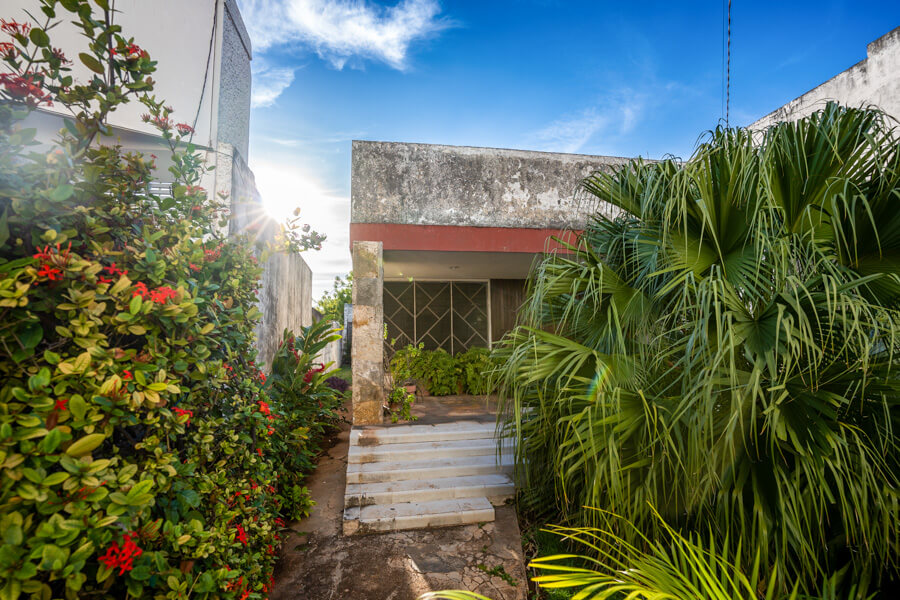
10mm at f/5.6
Besides landscape and real estate, it’s ideal for video recording thanks to Image Stabilization and STM.
It’s actually surprising it even has IS because ultra-wide lenses are so wide, you can shoot with really low shutter speeds and still get crisp results. It’s with telephoto lenses (100mm+) where you really can’t shoot without IS.
STM is an autofocusing motor that’s responsible for keeping the focus quiet, something every videographer needs.
All in all, this is an excellent addition to the kit 18-55mm as it finishes where the kit starts.
You can buy the Canon EF-S 10-18mm f/4.5-5.6 IS STM at Amazon here.
4. Canon EF 85mm f/1.8 USM
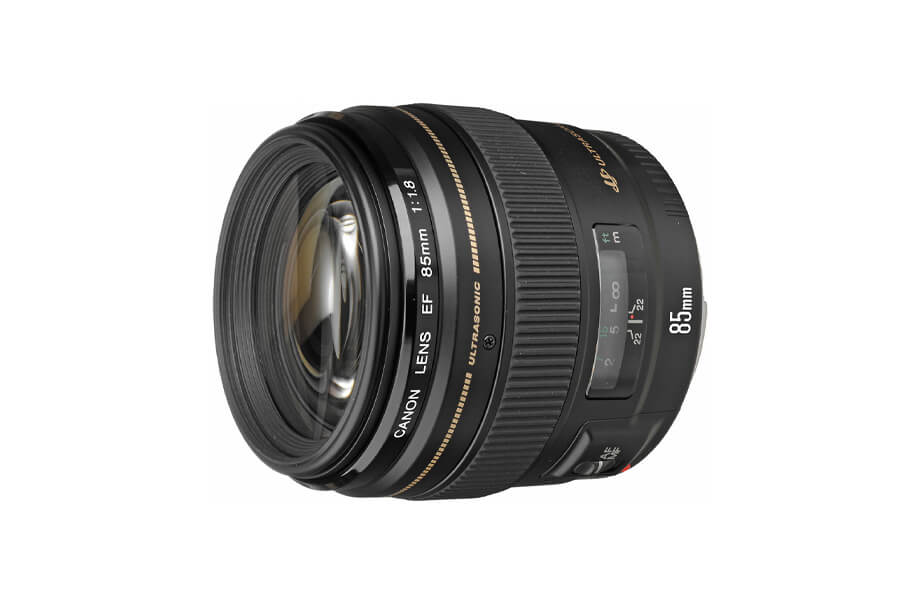
Best for: Portraits, weddings, low light, concerts, travel, details, pets
Filter Diameter: 49mm
Weight: 425g (14.99 oz.)
If you want beautiful portrait and wedding photographs, the Canon EF 85mm f/1.8 USM is an awesome choice.
What makes the Canon 85mm f/1.8 special?
It’s the 85mm length combined with that big f/1.8 aperture. Your subject will look tack sharp while the background will be beautifully creamy/out of focus. It’s what separates a lot of amateurish photographs from everyday snapshots.
Portrait photography is usually done with lenses between 50mm and 150mm, because the field of view does not distort faces; it compresses them nicely. Check out the example below from DIYphotography.net to see the effect your focal length has on faces.
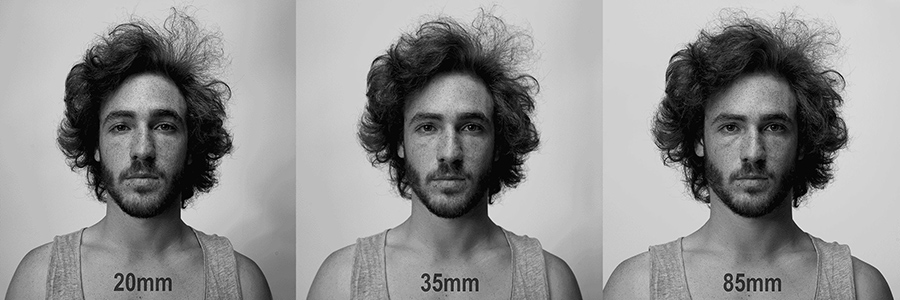
Related: What is Aperture? The Ultimate Guide (+Tips)
At 85mm the subject definitely looks a lot more natural and “normal”, whereas 20mm is way too wide. 35mm is acceptable but only if your subject isn’t too close to your lens.
The 85mm f/1.8 is an optical beast.
It’s razor sharp and renders colors beautifully. This is a lens you buy and forget about everything else, and it will only cost you around $300.
For serious wedding and portrait photography, you won’t find a better bang for the buck. Simply set your aperture between f/1.8 and f/2.8 and watch how magical your main subject will become.
It’s a bit too tight for casual day to day photography, but it’s still good for many other styles; street photography, animals, indoor sports, details, scenery. You could even use it for landscape to isolate a subject instead of showing its surroundings.
Unfortunately there is no Image Stabilization so your shutter speed will have to be between 1/50 and 1/100 to make sure your shots aren’t blurry. You can work around this by improving your posture when photographing, raising your ISO, or opening up the aperture as much as possible.
If you’re looking for a mainly video lens, I wouldn’t recommend the 85mm f/1.8. There’s no IS, so without a gimbal your footage can quickly look a bit shaky.
You can buy the Canon EF 85mm f/1.8 USM at Amazon here.
4. Canon EF 55-250mm f/4-5.6 IS STM

Best for: Animals, wildlife, outdoor sports, planes, races
Filter Diameter: 58mm
Weight: 375g (13.23 oz.)
Telephoto lenses are one of the best part of shooting with a DSLR. The Canon EF-S 55-250mm f/4-5.6 IS STM will get you all the way to 250mm, which is enough for photographing bigger animals, outdoor casual sports and pretty much anything you can’t physically get close to.
First I have to let you know that there is a more popular Canon lens with even more reach, and a $50 lower price, but its image quality after ~150mm is horrible. That lens is the Canon EF-S 75-300mm f/4-5.6 III, and it’s okay. Just okay.
If you’re a little bit more serious and don’t want to sacrifice quality, contrast or colors, this 55-250mm is newer and optically improved. It’s also not that expensive anyways.
What makes the Canon EF-S 55-250mm special?
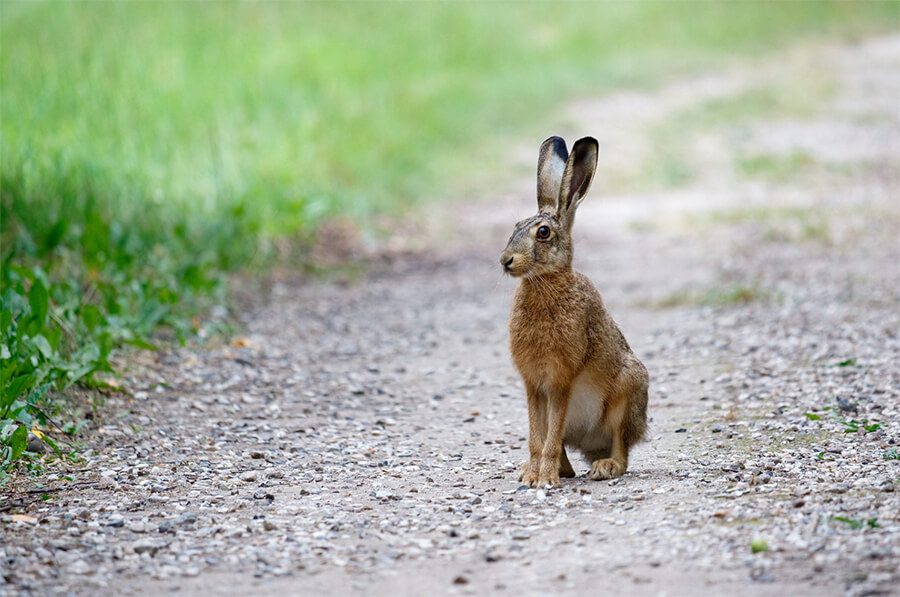
250mm at f/5.6
Our smartphones are acceptable when it comes to wide/standard focal lengths because that’s where most of the design attention goes to. As soon as you try to zoom in too much, you see how the quality degrades and everything starts looking like a painting.
Telephoto lenses for DSLRs are optically years ahead, and make photography so much fun. Wildlife, safari, and sports photographers all use them.
Quite often, telephotos tend to be big and heavy to carry around, but because the Canon Rebel T7 has an EF-S mount, all EF-S lenses are way more compact compared to the more expensive EF mount.
You can buy the Canon EF-S 55-250mm f/4-5.6 IS STM at Amazon here.
6. Canon EF-S 24mm f/2.8 STM

Best for: Portraits, weddings, low light, travel, details, pets
Filter Diameter: 52mm
Weight: 125g (4.41 oz.)
By far the weirdest looking lens is the Canon EF-S 24mm f/2.8 STM; it’s what we call a “pancake” lens due to its flat design.
Why would you get it?
If traveling light is your priority the 24mm is an ideal partner. Plus, 24mm is similar to how we see the world with our eyes.
It’s one of those lenses you can actually carry in your pocket in case you don’t want to bring a camera bag along.
There’s no zoom so my recommendation once again is to set your kit 18-55mm to 24mm and pretend it’s stuck for a couple of days. Get the feel for how far away from your subject you need to be, and see if it suits your current style.
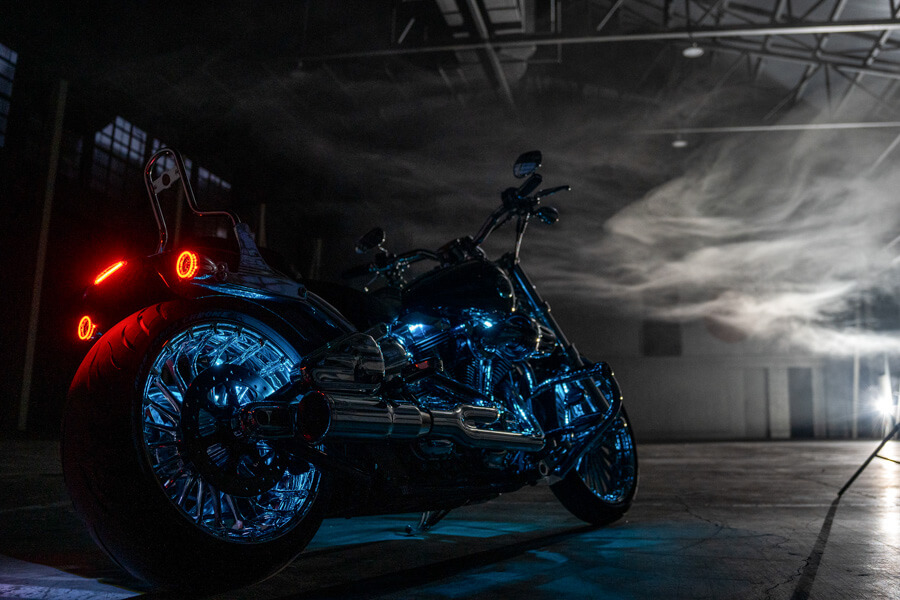 24mm at f/2.8
24mm at f/2.8
24mm is great for landscape, classic street photography, food, cars, you name it. While f/2.8 is not as big as with the other two primes on this list, it’s still miles ahead of the kit lens.
This means it can also be used when the sun goes down, but not for astrophotography (the Rebel T7’s high ISO performance is bad after ISO 800).
You can buy the Canon EF-S 24mm f/2.8 STM Amazon here.
7 Common Canon Rebel T7 Questions:

It’s always best to read the official Canon T7 manual that came with your camera, but these are the most common questions for entry-level models
1. Is the Canon Rebel T7 Good for Beginners?
Yes, the Canon Rebel T7 is an excellent DSLR for beginners. It has a big 24 megapixel sensor and is one of the most compact cameras available, not to mention its low price.
It’s an excellent upgrade from a smartphone if you’re looking to improve the image quality and shoot with many different lenses. The 6 lenses in this guide are my favorite, even for more advanced shooters, but there a lot more available (macro, super telephoto, etc.)
2. Does the Canon Rebel T7 have Bluetooth/Wi-Fi?
Yes, the Canon Rebel T7 supports both Bluetooth and Wi-Fi connections. Simply download the Canon official app which allows you to remotely control the camera from your smartphone.
Enable the Wi-Fi option on the Rebel T7 and connect to it with your smartphone like with any regular Wi-Fi. You can also use this feature to quickly transfer your files onto the phone.
This is a great feature because you don’t have to buy any third-party remote controllers, all you need is a phone.
3. Which Settings for Best Image Quality?
This one is tough to answer because there are no perfect settings, they change based on your scenario.
You can either shoot in Automatic mode and rely on your camera, which is okay in decent conditions. However, to truly take amazing shots, you should learn a little bit about:
- Shutter speed
- Aperture
- ISO sensitivity
- Composition (Rule of thirds, angles)
- Post processing (Color editing, RAW files, etc.)
These 3 settings in bold are the most important for getting amazing photographs. When your camera is in Auto mode, it does what it think’s is the best, but it can often be wrong (especially for sunsets or night time photography).
The Canon T7 has a big APS-C sensor with 24 megapixels, so it’s ready to deliver excellent quality. It’s up to your lenses and settings, as well as composition, that will allow you to use it to its full potential.
4. How Many Lenses Do I Need?
You only need 1 lens to start taking great pictures.
There is absolutely no reason to buy every single lens out there just because you think you might need it.
Start with the kit 18-55mm, or a 50mm prime, and then see what works for you. Do you prefer a lens with plenty of zoom, or are you more into prime lenses with big apertures?
Only then should you research and invest in lenses that you can keep forever. Trust me, you might upgrade your camera in the next few years, and it would be nice to keep some of the lenses as well.
5. Does the Canon Rebel T7 Record Videos?
Yes, the Canon Rebel T7 can record videos in Full HD (1920×1080) at 30 or 24 frames per second. It has great video quality with rich colors and contrast, but it is very bad when it comes to video auto focus.
That’s why I recommend you to focus manually, which is simply done by rotating the focus ring on every lens. Trust me, if you want professional like video quality, auto focus is definitely not the way to go.
6. How to Change Lenses?
Every camera has a button on its body that sits right next to the lens.
- Press the button, which will “unlock” the lens instantly
- Twist the lens and remove it
- Line up the white dot on the lens with the white dot on the camera lens mount
- Twist the lens and wait for the *click* sound
You do this for all lenses you plan on mounting on the camera; align the two white dots and twist.
The only thing you should be careful is to not expose the sensor to too much wind or dust, especially if shooting outside. Dust and other particles can get on the sensor (they will eventually, don’t worry) and it’s why we have cheap air blowers and cleaning kits to remove all that.
Whenever you change lenses, make sure to rotate the camera’s open sensor towards you, to block any dust. I seriously recommend you to get a couple of cleaning items (my Canon Rebel T7 accessories guide is here).
What About Other Lenses & Tips?
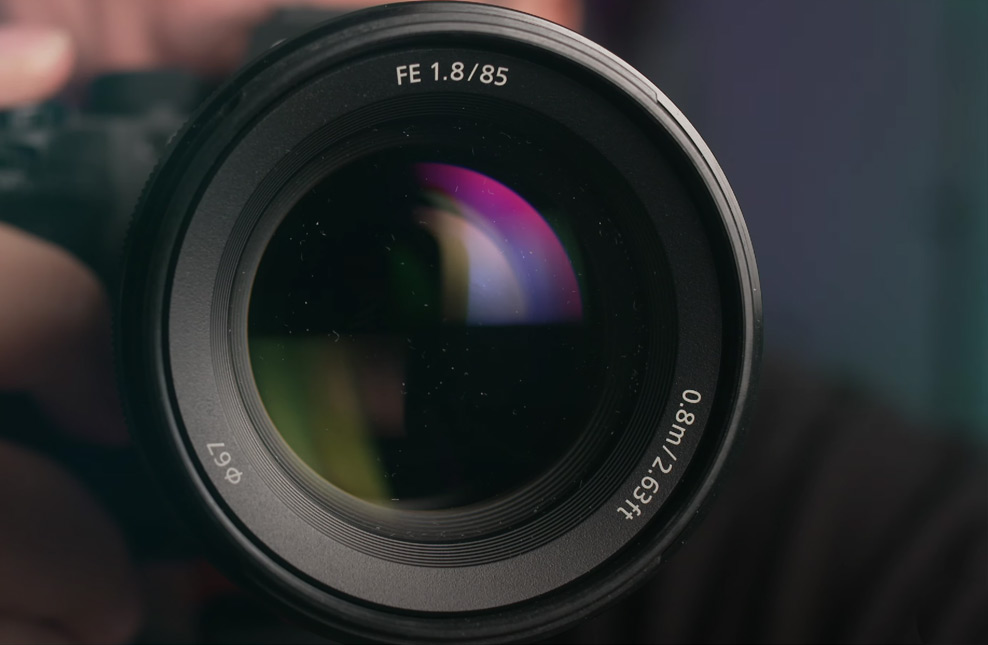
If you are a beginner, I recommend you to stick with 1 or 2 lenses and get a good understanding of what is your photography style.
After a few weeks of casual shooting/traveling, you’ll quickly see what lenses are missing from your arsenal.
Thankfully, there are a ton of options from Canon, Sigma, Tamron and a couple of other brands. In these links you can actually find all of their EF and EF-S options.
Should you buy used lenses?
Absolutely!
The Canon Rebel T7 is an EF-S/EF mount camera, and this mount has actually been discontinued by Canon a couple of years ago. Don’t worry, your camera and lenses are just as good as the day they were released, but don’t expect any new announcements.
This is actually good news for all of us who love the quality of Canon’s cameras because now, it’s even cheaper to find good quality lenses. I recommend MPB and eBay for online purchases.
Canon Rebel T7: My Other Guides
- Want to take better images? Check out my list of Best Lenses for Canon Rebel T7 in 2025.
- Is your memory card fast enough? Here’s my guide on Best Memory Cards for Canon T7.
- If you didn’t order the camera yet, here’s a list of my Most Recommended Canon T7 Bundles.
- Ready to take your photography to the next level? Here is my Ultimate Shutter Speed Guide for Beginners.


